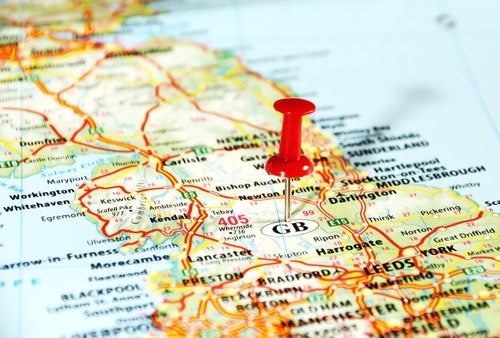How boundary changes could reshape the next election battlegrounds
In a tight contest, the latest changes could make all the difference, says Sean O’Grady


Boundary Commissioners for England, Scotland, Wales and Northern Ireland respectively have now all published their final reports. They’ve reviewed every seat in the UK with the aim of reducing size disparities.
In line with legislation passed in 2020, the commissioners were working to a requirement that all constituencies must have between 69,724 and 77,062 voters on the electoral roll. They were also required to consult extensively and take some account of local authority boundaries (so as not to split seats across council areas where possible), local identities and to avoid unnatural shapes or gerrymandering.
Barring any last minute interventions, the government will draft an Order in Council containing the recommendations of all four commissions. Once that is approved by the Privy Council, the new constituencies will be used for the next general election. There will be no parliamentary debate, which is perhaps just as well given that so many MPs have a personal interest in the matter, up to and including having their seat abolished from underneath them.
Does it make a Conservative win at the next election more or less likely?
At the margin, more likely. Perhaps more realistically, it will slightly cushion the loss. On a tough news day for the Conservatives, party managers will find a crumb of comfort in the way the new borders will tend to favour them, slightly.
Psephologists are yet to deliver their final verdict – a tricky process involving inputing local election ward data to the new constituencies – but the working assumption is that, had the 2019 election been fought on these new boundaries, the Tories would have gained around six more seats, pushing Boris Johnson’s majority up towards the 100-plus mark. On the basis of the votes cast in that election, the gains would have been three seats from Labour, one from the Lib Dems and one from Plaid Cymru. With Labour currently enjoying a poll lead of 20 points or so, it’s a bit academic; but in a tighter contest, these changes might just keep the Tories in power.
Why does it favour the Conservatives?
It is one of the quirks of Westminster’s first-past-the-post, constituency system of parliamentary elections. In recent decades there’s been a pattern of depopulating Labour seats in northern England gradually losing their representation, and the number of suburban seats in the south slowly gaining in numbers, in line with demographic trends. For example, at the 1959 election Liverpool returned nine MPs, mostly Labour; in 2019 and again in 2024 it will be just five, albeit all Labour and generally the safest in the UK.
Conservative voters are also more efficiently distributed; for example, the party does not pile up lots of votes in already safe seats. If Labour and the Tories both scored an identical 40 per cent share of the national vote, the Conservatives would end up with more MPs. (In the 1950s, the advantage went the other way.) The trend in the 2010s was for the Tories to start picking up ‘Red Wall’ seats, so the boundary effect is perhaps more muted now.
Who are the other boundary change winners and losers?
Constituency seats in England will increase by 12, from 533 to 545. Wales will lose eight MPs, going from 40 to 32, while Scotland will drop from 59 to 57. The number of seats in Northern Ireland will remain the same at 18. Now that devolved administrations have been established in Edinburgh, Cardiff and Belfast, their historical over-representation at Westminster has been reduced. Continuing a trend over the decades, the southeast of England gains seven seats, while the north west, north east and West Midlands lose two each.
Are we going to get more MPs overall?
To the relief of many, no; there were 650 before, and there will be 650 next time round.
Are any famous names in trouble?
Some. Gavin Williamson has seen his seat disappear, as has Ben Wallace, and neither have yet found new constituencies – a harder task now that there are perhaps few seats that can be counted as safe for a Tory on the ‘”chicken run”. In selections made before the final boundary reports, Suella Braverman fought successfully to be selected in the new Fareham and Waterlooville seat in Hampshire, after the scrapping of her existing Fareham constituency.
What about the Isle of Wight?
This had always been an exception to the population rule, with a single giant seat permitted owing to the island’s clear singular identity. Now, it has been split in two: Isle of Wight East and Isle of Wight West. By contrast, the Scottish seats of Orkney, Shetland and Na h-Eileanan an Iar are kept as single entities, as is the Welsh seat of Ynys Môn.
What about the upcoming by-elections?
These will be fought on the existing boundaries.
Join our commenting forum
Join thought-provoking conversations, follow other Independent readers and see their replies
Comments
Bookmark popover
Removed from bookmarks